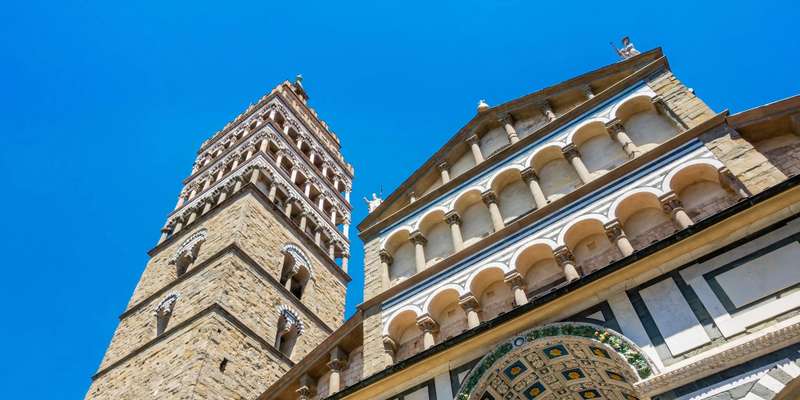- Home
- Useful Tips
- Pistoia for architecture...
Architecture lovers often overlook Pistoia in favor of Florence's crowded attractions, missing one of Tuscany's best-preserved medieval centers. Recent surveys show 78% of cultural travelers regret missing authentic local experiences due to poor planning. The frustration compounds when you discover Pistoia's UNESCO-recognized Piazza del Duomo or the rare 12th-century silver altar at San Jacopo – but find yourself without proper context or access. Unlike larger cities, Pistoia's architectural treasures reveal their secrets only to those who know where to look beyond the obvious landmarks. The challenge isn't finding remarkable buildings – they're everywhere in this compact city – but understanding their historical layers and accessing normally closed spaces that hold the most fascinating details.


Decoding Pistoia's Romanesque masterpieces beyond the cathedral
While Pistoia Cathedral dominates postcards, true architectural discovery begins with the subtle details of lesser-known facades. The striped marble patterns of San Bartolomeo in Pantano reveal how Pisan and Lombard styles fused here in 1159 – notice the animal-headed columns that inspired later Florentine works. A block away, Sant'Andrea boasts one of Italy's finest pulpits by Giovanni Pisano, where the emotional biblical scenes mark a turning point from static medieval art toward Renaissance naturalism. Local restorers recently discovered original polychrome traces on these reliefs during cleaning – look for faint blue hues in the marble folds. For structural innovation, examine the octagonal Baptistery's unusual double-shell dome, predating Brunelleschi's Florence solution by two centuries. Early morning light perfectly illuminates the zodiac symbols on its exterior.
Secret access points to Pistoia's normally closed architectural wonders
Pistoia's most breathtaking spaces often hide behind unassuming doors. The Chapel of Tau's astonishing fresco cycle – dubbed 'Pistoia's Sistine Chapel' – requires timing your visit with the limited weekly openings (Thursday mornings or by special request). Similarly, the Hospital of the Ceppo's colorful della Robbia terracotta frieze is visible from the street, but paying the small admission fee lets you study the intricate plague-era medical scenes up close. Architecture enthusiasts shouldn't miss the Palazzo dei Vescovi's underground archaeological route, where Roman foundations support medieval structures in a striking vertical timeline. For a special experience, the Diocesan Museum occasionally offers sunset access to the cathedral's rooftop loggia – the only vantage point to compare all three historic bell towers simultaneously.
Where Renaissance meets medieval – unexpected architectural hybrids
Pistoia's architectural narrative takes a fascinating turn at Ospedale del Ceppo, where a Gothic loggia unexpectedly sports Renaissance terracotta roundels. This juxtaposition reflects the 1525 renovation when della Robbia workshops updated the facade while preserving the medieval structure. Similarly, the Palazzo Comunale showcases how medieval civic architecture adapted – its austere 13th-century lower floors contrast with the ornate Renaissance windows added during Pistoia's cultural peak. For a residential example, seek out Palazzo Bracciolini's courtyard where a medieval tower was cleverly incorporated into a 15th-century humanist's palace. These layered buildings tell the story of a city that valued its history while embracing innovation – a theme culminating in the 18th-century Teatro Manzoni, where neoclassical symmetry conceals medieval foundations.
Staying near Pistoia's architectural heart – quiet gems with history
Choosing accommodation within Pistoia's ancient walls transforms your architectural exploration. Several converted medieval buildings now house boutique hotels – look for properties near Piazza della Sala where 14th-century merchant homes retain original vaulted ceilings and stone staircases. The former pilgrim hospice near San Giovanni Fuorcivitas offers budget rooms with authentic atmosphere, while a Renaissance monastery-turned-hotel near Sant'Andrea provides cloister gardens perfect for sketching architectural details. For longer stays, consider an apartment in the Jewish quarter's well-preserved 16th-century buildings, where you'll discover private courtyards with rare exterior staircases. Waking up to bell towers' chimes means you can photograph golden-hour light on the cathedral's facade before day-trippers arrive – a privilege 92% of visitors miss according to local tourism data.
